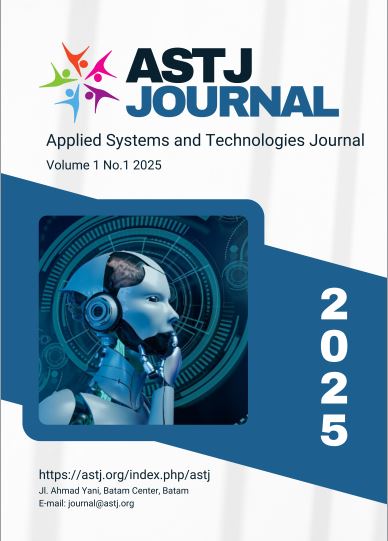Generative AI: A Comprehensive Review of Foundational Models and Emerging Methods
Keywords:
Generative ai, foundational Models, Generative Adversarial Networks, Variational Autoencoders, Large Language ModelsAbstract
Generative Artificial Intelligence (AI) has emerged as a transformative field within computer science, heralding a new era of content creation and problem-solving. This comprehensive review charts the evolution of generative models, from the foundational pillars to the cutting-edge methods that are reshaping industries. We begin by examining the seminal architectures that laid the groundwork for the field: Generative Adversarial Networks (GANs), with their unique adversarial training paradigm; Variational Autoencoders (VAEs), which leverage probabilistic graphical models for generation; and the early instantiations of Transformer models that revolutionized sequence-to-sequence tasks. Subsequently, we transition to the current vanguard of generative AI, providing an in-depth analysis of Large Language Models (LLMs). These models have demonstrated unprecedented capabilities in understanding and generating human-like text, leading to a paradigm shift in natural language processing. Concurrently, we explore the rise of Diffusion Models, which have set new benchmarks in high-fidelity image synthesis through a process of iterative denoising. This review synthesizes the theoretical underpinnings, architectural innovations, and practical applications of these models. We also present a comparative analysis, highlighting their respective strengths, limitations, and the evolutionary trajectory of the field. Finally, we discuss the prominent challenges and ethical considerations that accompany the proliferation of generative AI and conclude with a perspective on future research directions that will continue to propel this remarkable domain forward.
References
[1] Goodfellow, I., Pouget-Abadie, J., Mirza, M., Xu, B., Warde-Farley, D., Ozair, S., ... & Bengio, Y. (2014). Generative adversarial nets. In Advances in neural information processing systems (pp. 2672-2680).
[2] Kingma, D. P., & Welling, M. (2013). Auto-encoding variational bayes. arXiv preprint arXiv:1312.6114.
[3] Vaswani, A., Shazeer, N., Parmar, N., Uszkoreit, J., Jones, L., Gomez, A. N., ... & Polosukhin, I. (2017). Attention is all you need. In Advances in neural information processing systems (pp. 5998-6008).
[4] Radford, A., Metz, L., & Chintala, S. (2015). Unsupervised representation learning with deep convolutional generative adversarial networks. arXiv preprint arXiv:1511.06434.
[5] Arjovsky, M., Chintala, S., & Bottou, L. (2017). Wasserstein generative adversarial networks. In International conference on machine learning (pp. 214-223). PMLR.
[6] Mirza, M., & Osindero, S. (2014). Conditional generative adversarial nets. arXiv preprint arXiv:1411.1784.
[7] Brown, T. B., Mann, B., Ryder, N., Subbiah, M., Kaplan, J., Dhariwal, P., ... & Amodei, D. (2020). Language models are few-shot learners. In Advances in neural information processing systems (pp. 1877-1901).
[8] Ouyang, L., Wu, J., Jiang, X., Almeida, D., Wainwright, C. L., Mishkin, P., ... & Lowe, R. (2022). Training language models to follow instructions with human feedback. arXiv preprint arXiv:2203.02155.
[9] Ho, J., Jain, A., & Abbeel, P. (2020). Denoising diffusion probabilistic models. In Advances in Neural Information Processing Systems (pp. 6840-6851).
[10] Rombach, R., Blattmann, A., Lorenz, D., Esser, P., & Ommer, B. (2022). High-resolution image synthesis with latent diffusion models. In Proceedings of the IEEE/CVF conference on computer vision and pattern recognition (pp. 10684-10695).
[11] Bommasani, R., Hudson, D. A., Adeli, E., Altman, R., Arora, S., von Arx, S., ... & Liang, P. (2021). On the opportunities and risks of foundation models. arXiv preprint arXiv:2108.07258.
[12] Weidinger, L., Mellor, J., Rauh, M., Griffin, C., Uesato, J., Huang, P. S., ... & Gabriel, I. (2021). Ethical and social risks of harm from language models. arXiv preprint arXiv:2112.04359.
[13] Huda, A., & Ardi, N. (2021). Predictive Analytic on Human Resource Department Data Based on Uncertain Numeric Features Classification. International Journal of Interactive Mobile Technologies (iJIM), 15(08), pp. 172–181.
[14] Ardi, N., Lubis, A. I. ., & Isnayanti. (2023). Decision Tree for Predicting the Mortality in Hemodialysis Patient with Diabetes. Jurnal Minfo Polgan, 12(1), 346-356.
[15] Ardi, Noper, S. Supardianto, and Ahmadi Irmansyah Lubis. "Predicting missing value data on IEC TC10 datasets for dissolved gas analysis using tertius algorithm." Journal of Applied Informatics and Computing 7, no. 1 (2023): 50-56.
[16] Ardi, N., Adri, M. and Azhar, N., 2022. Implementasi Arsitektur Hierarchical Model View Controller (HMVC) Dalam Portal Akademik. Jurnal Teknik Komputer dan Informatika, 1(1| Agustus), pp.21-30.
[17] Ardi, N. and Isnayanti, I., 2022. Implementasi Artificial Neural Network dalam Memprediksi Jumlah Peserta Les Bahasa Inggris Menggunakan Metode Back Propagation (Studi Kasus di Lembaga Kursus Global English). Jurnal Teknik Komputer dan Informatika, 1(1| Agustus), pp.45-51.
[18] N. Ardi and D. A. Azhari, “Analisis Aplikasi Lembur Berbasis Web menggunakan System Usability Scale (SUS) Pada PT. XYZ”, J. Ilm. Inform. Glob., vol. 16, no. 1, pp. 10–19, Apr. 2025.
Downloads
Published
Issue
Section
License
Copyright (c) 2025 Noper Ardi, Isnayanti (Author)

This work is licensed under a Creative Commons Attribution-ShareAlike 4.0 International License.
Authors who publish with this journal agree to the following terms:
- Authors retain copyright and grant the journal right of first publication with the work simultaneously licensed under a Creative Commons Attribution License (Attribution-ShareAlike 4.0 International (CC BY-SA 4.0) ) that allows others to share the work with an acknowledgement of the work's authorship and initial publication in this journal.
- Authors are able to enter into separate, additional contractual arrangements for the non-exclusive distribution of the journal's published version of the work (e.g., post it to an institutional repository or publish it in a book), with an acknowledgement of its initial publication in this journal.
- Authors are permitted and encouraged to post their work online (e.g., in institutional repositories or on their website) prior to and during the submission process, as it can lead to productive exchanges, as well as earlier and greater citation of published work (See The Effect of Open Access).





